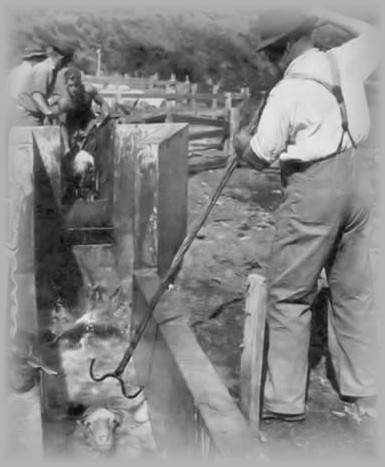Rebuilding after an Agile-ocalypse
A Case Study on Building and Aligning a Team of Teams after an Apocalypse
Organizational Coach
Organization
A Fortune 50 Financial Banking Services Company
Achievement
The result was 12 cross functional teams containing the best (not perfect) combination of team members for the organization to deliver on its goals. The teams began holding their retrospectives on the same day, to allow teams to ‘pass up’ information to the team-of-teams at the same time.
Challenge
We needed to complete was the reorganization of large component teams into smaller self managing, cross-functional, feature teams. Once we had our cross functional feature teams it became important that they learnt to work with each other.
Solution
Approaching the engagement with the client using a more holistic and integral lens led the client to solve their own problems and not to rely on prescriptive methods from books about what has worked for others.
In X, whilst living in England, I was invited to join a large bank in America, some might say it’s the only bank of America. I was first involved in their agility efforts in London, England before I went to Jersey City, NJ to spread what we had learnt from England.
I was brought in to execute. I say ‘execute’ because my role was in stark contrast to what had followed before.

An expert in ‘sheep dipping’
The company had recently contracted with an Agile ‘luminary.’ The luminary was very much in demand and could only spare (or maybe the client was only willing to pay for) two weeks of his attention before he would be off to ‘rescue’ the next enterprise. He resorted to what some would term ‘sheep dip’ training.
If you’re not in the know about livestock farming practices, sheep dipping is the abrupt immersion of a sheep in water containing insecticides and fungicides, effectively disinfecting the unsuspecting sheep though leaving their subjects somewhat disoriented and probably more than a little terrified. Predictably, the outcome was the same for the subjects that underwent the Agile equivalent of a sheep dip.
Then came the ‘shock and awe’ campaign
During the two weeks with the client, the sheep dipper deployed ‘shock and awe’ tactics to reinforce what a serious and consequential change the client had subscribed to when they decided to ‘flip the organization’. As one example, he told everyone point blank that there were no managers needed in the organization anymore.
‘First the sheep dip, now you're taking my job?’ -- not quite. He had been careful to make the distinction between roles and jobs and simply suggested that maybe it was time for the managers to ‘pick up their tools and start delivering some value’, you can imagine how that went down. This was by no means the extent of the shake up, some people had been told they would need to learn entirely new languages and new technologies. Others were told that they would no longer report to the person they had been reporting to for the last 10 years. Career paths had disappeared overnight, and the stark reality was that their teammates were all likely to change. [Then the two weeks were up.]
As you can imagine, as I first walked into this burning building, I quickly realized that I faced a lot of challenges.
The organization comprised about 300 people, split with roughly 120 in London, and 180 in Jersey City. The plan was to have the transformed London organization up and running before taking the learnings across the pond to the bigger (both literally and culturally) challenge in Jersey City.
Forming groups of people into effective teams
One of the first structural changes we needed to complete was the reorganization of large component teams into smaller self managing, cross-functional, feature teams. The new feature teams would be expected to work with one another on a sprint by sprint basis. They would eventually need to coordinate to answer questions including; Who would be best to do what work? When would a cohesive feature set be ready to be pushed to the customer? And when would technical dependencies likely be resolved?
The formation of cross functional teams
In order to reorganize the large component teams into smaller cross-functional feature teams, the intention of management was for them to go into a room with a spreadsheet detailing the different skills and objective measures for each individual person. The proposal was that the managers could then run their ‘scientific algorithm’ over the names to optimize the organization into the 12 best teams.
In reality their ‘algorithm’ was them sitting for hours with a spreadsheet, running scenarios: What if this person is on this team? What about this person on that team? Think of it like wedding planners deciding on the seating plan. It felt to me like there was something missing. Not only was there something kind of wrong about boiling someone's attributes (skills, personality, pasion etc.) down to a few numbers but also it assumed that the small group of managers in the ivory tower were the people best positioned to decide the optimal team configuration.
Moving from management to self-organization
I worked with the managers to do some soul searching. They were initially untrusting of my suggestion but eventually we agreed to instead take a more holistic approach to forming teams. We decided to let teams self organize and to let the team members configure their own teams. I mean what could go wrong? Well, imagine your wedding guest turning up and telling them they should collectively decide on the seating plan. The outcome would be great, but the process would probably be awful. So together with some careful planning, facilitation, and group rules, we successfully ran a ‘big room’ team formation where individuals weighed all their own facets (left and right quadrants) to form optimal teams for the organization.
The result was 12 cross functional teams containing the best (not perfect) combination of team members for the organization to deliver on its goals.
New teams meant new dynamics
Once we had our cross functional feature teams it became important that they learnt to work with each other. In the past, the level of coordination between the larger component teams was limited to less frequent interactions, mainly by the aforementioned managers and mostly concerned conflict.
LeSS inspired
The new feature teams would be expected to work with one another on a sprint by sprint basis. Questions that needed to be answered included; Who would be best to do what work? When would a cohesive feature set be ready to be pushed to the customer? And when would technical dependencies likely be resolved?
Our solution leant heavily on LeSS for inspiration. It required team members to sync up and talk with one another. As an example, for product backlog refinement the teams would all send representatives (not managers since, there is no such thing as managers anymore) to meet with the product owner at the same time -- eight days before the start of the next sprint. These eight days gave the individual teams enough time to do PBR (product backlog refinement) and to resolve dependencies before the start of the next sprint. We had no name for this concept at the time, but we didn’t need one, the teams were focused on what they wanted to achieve and not what its label was. In Integral Agile, we would say this group of people were acting in the capacity of a ‘team of teams’.
Teams aligned in goal and purpose
They recognized for themselves (with some coaching) that it was important that they all be synced up to plan and make decisions at the same time because those conversation were orders of magnitude cheaper to have in real time, as they planned together, rather than a-synchronously where the cost of changing decisions caused a ripple effect of re-planning amongst the teams.
The team-of-teams recognized that making choices that provided information to the teams at the same time should be done at the last possible moment. This would allow the teams to act in concert on this information. The teams also noticed that synchronizing information that needed to be passed from the team to the team of teams had a similar dynamic. The teams began holding their retrospectives on the same day, to allow teams to ‘pass up’ information to the team-of-teams at the same time. The team-of-teams then held a retrospective where members looked for cross-team symptoms and high leverage experiments to try in order to improve every team’s life.
It didn’t stop there
As you can imagine, these are only two very specific elements that we adopted to make the reorganization work. Rightly or wrongly the scars from the shock and awe approach persisted for many years and required many ‘fixes’. I am proud to say that approaching the engagement with the client using a more holistic and integral lens led the client to solve their own problems and not to rely on prescriptive methods from books about what has worked for others. The client went on to use the same patterns across the pond in jersey city as a starting point but quickly adapted their way of work to accommodate the local challenges and cultures.
The changes led to a more excited, motivated and empowered workforce which was 'nice' for those involved but ultimately the structural changes led to the elimination of serious key person risks in jersey city and doubled the throughput in London.






